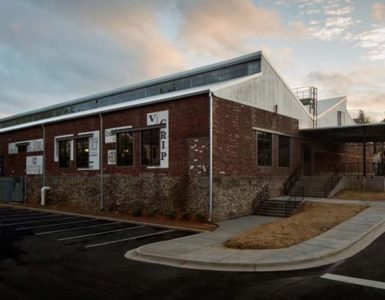I sit in a church building, waiting for my niece’s wedding to begin. The ceiling rises high above me; a row of geometrically identical Celtic crosses adorns the forward wall. Aside from the presence of a recessed baptistry behind the pulpit area, this space — physically and spiritually — is completely divorced from the church of my childhood.
* * * * *
For Christians, we ultra-conservative C of C’ers were cross-averse. (I think this had something to do with the strong anti-Catholic sentiment that typified our branch of the C of C back during the Kennedy administration.) We did not mount crosses on the walls of our church buildings. In fact, my childhood church had been stripped of any visual or architectural cues designed to inspire reverence or project a sense of the divine. Essentially, we met in a cinderblock warehouse filled with pews and a lectern.
I also recall, in the church where I grew up, a pervasive paranoia: obsession and worry and uncertainty camouflaged by self-righteousness. At least on the surface, that doesn’t appear to be the case in Mike’s south Alabama congregation. People here look and sound happier and healthier.
Spiritually and emotionally, I left the church of Christ in the late 1980’s. (It took some time for my body to follow … I didn’t physically stop attending and working for the church until about ten years ago.) Afterward, I went through a phase of agnosticism and outright atheism that lasted six years or so.
Looking back, I see atheism as a critical step: distancing myself from a claustrophobic, hand-me-down, inherited faith. Atheism leveled the blocky, rigid structures of my childhood religion; rejecting God was a means of clearing away the debris in search of my own foundation.
With time, personal quests led me back to God, where I’ve been able to build my own relationship: a faith that’s really mine. It’s not much like the faith of my fathers … but it’s a hard-won perspective that motivates me to be a better person than I was without it.
I’m fairly sure that members of my brother’s church would still, if we discussed them, find certain aspects of my faith unusual, contradictory, or even disturbing. That said — I am also forced to admit that the people assembled here, at my niece’s wedding, are not the harsh, nervous, and rigid caricatures that dominated my early years.
The church of Christ taught me to see the world in black and white: a simple world of right vs. wrong, good vs. evil, us vs. them. I’ve struggled to overcome that vision … so it’s a shock to find myself still seeing the church of Christ in those terms.
It’s nothing more than simple, ugly prejudice when people say, “All gay people are sinful sex addicts motivated by lust.” And it’s nothing more than prejudice when I paint all members of the church of Christ as fearful, Bible-thumping, Pharisees.
* * * * *
The wedding comes off without a hitch. Chris, my niece’s husband, is an amazing guy: handsome and smart and vulnerable and honest. Heather, sporting a hand-made bridal gown, glides across the floor, radiant and elegant. My brother leads the ceremony, his voice breaking here and there with emotion; with effort, he pushes past tears and makes it to the end.
I sit in the pews, watching … aware of the presence of God in this place … and ashamed that this observation surprises me.


Add comment